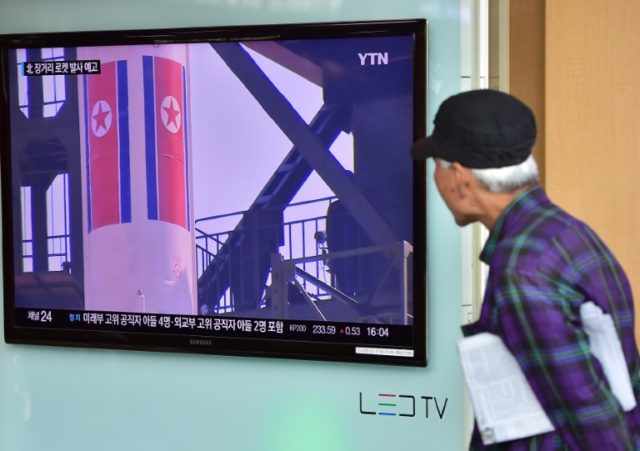The Center for Strategic and International Studies (CSIS) released a report on Tuesday that said satellite photos have uncovered possible uranium reprocessing at North Korea’s Yongbyon reactor. If such activity is indeed underway, it would suggest North Korea is preparing to create more nuclear warheads.
CSIS analyzed satellite photos taken last week and spotted “five specialized railcars near the Uranium Enrichment Facility and the Radiochemistry Laboratory.”
“In the past, these specialized railcars appear to have been associated with the movement of radioactive material or reprocessing campaigns. The current activity, along with their configurations, does not rule out their possible involvement in such activity, either before or after a reprocessing campaign,” the report inferred.
The satellites also spotted a large construction crane near the reactor, a tanker truck on the road leading to the facility, and “several vehicles in the maintenance area.” A shipping container was seen near the uranium enrichment plant.
“Elsewhere, throughout the facility, the level of activity appears to be typical of spring during the past several years,” the CSIS report concluded, backing down considerably from the sensational hypothesis of its title.
This is the latest in a series of reports from various observers who pored over satellite photos to find evidence that North Korea is preparing to engage in provocative activity that would bring a decisive halt to denuclearization discussions.
A January report from CSIS, for example, ominously created the impression of scurrilous North Korean activity at secret missile bases, when in fact the bases have been well-known to U.S. and South Korean intelligence agencies for decades. That report also concluded by admitting there was no firm evidence of threatening activity at any of the bases, which are problematic because North Korea refuses to formally admit they exist, not because they are “secret” locations.
This is not to say that North Korean activity is uninteresting or insignificant. Even small and dubious steps toward reactivating a uranium enrichment facility or missile test site could pave the way for more clearly threatening actions to be taken quickly at a later date.
It is also possible the North Koreans are staging some of these scenes precisely because they know satellites will see them, transmitting a message of defiance to the West and ratcheting up pressure on American negotiators. Some of the reconstruction activity at supposedly shuttered missile sites seems designed to catch the eye of orbiting satellites.
Yongbyon, a facility crucial to North Korea’s nuclear program but not necessarily irreplaceable, was on the table when President Donald Trump met with North Korean dictator Kim Jong-un in Hanoi in February. The North Koreans claimed to be furious because Trump would not offer sanctions relief in exchange for a promise to shut down the reactor. It is not unreasonable to wonder if five rail cars parked outside Yongbyon are intended as one raised finger directed at the United States and its satellite cameras.

COMMENTS
Please let us know if you're having issues with commenting.